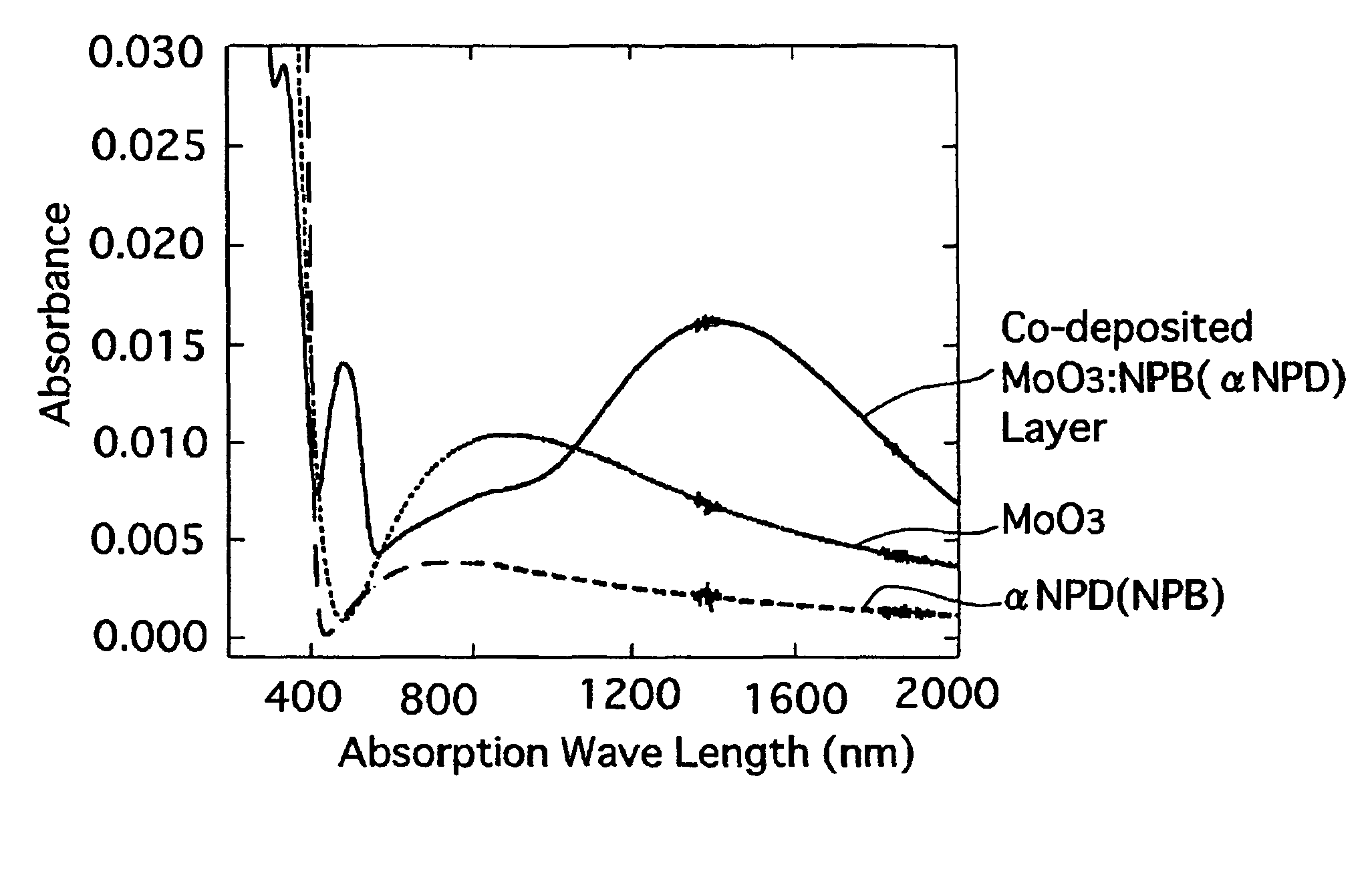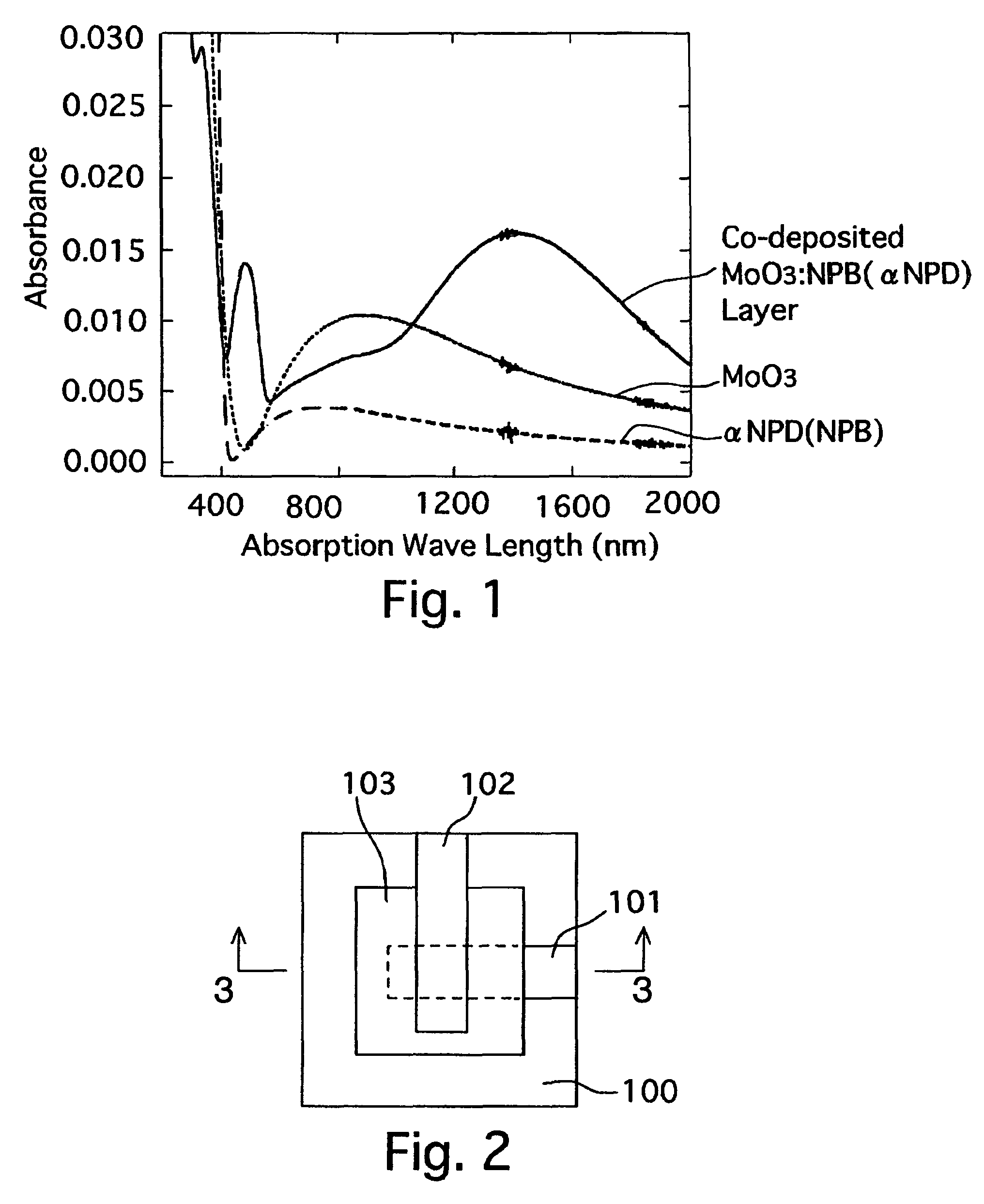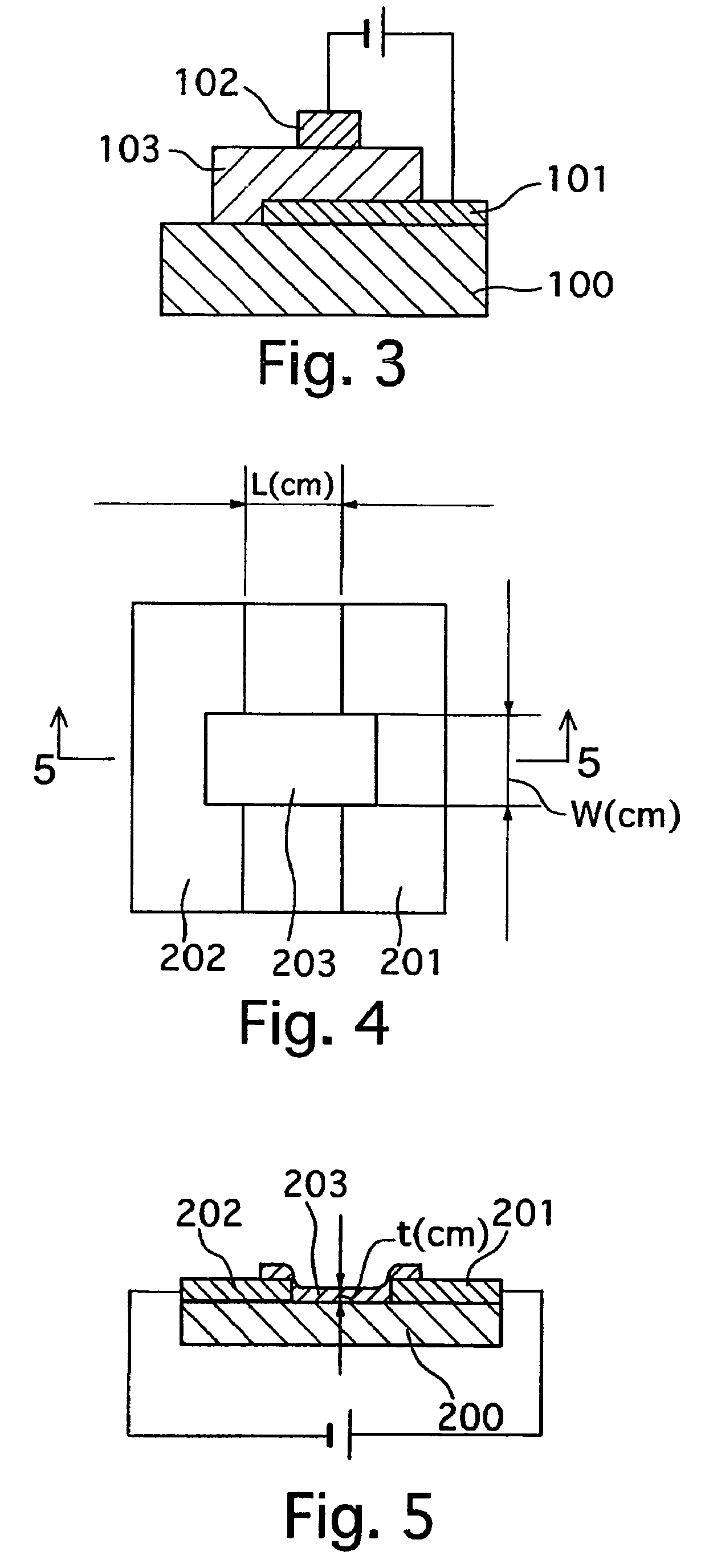Organic devices, organic electroluminescent devices and organic solar cells
a solar cell and electroluminescent technology, applied in the direction of instruments, discharge tubes luminescnet screens, natural mineral layered products, etc., can solve the problems of insufficient light transmissivity and limited thickness of the devi
- Summary
- Abstract
- Description
- Claims
- Application Information
AI Technical Summary
Benefits of technology
Problems solved by technology
Method used
Image
Examples
example 1
[0070]In Example 1, an absorption spectrum and its absorbance value (at layer thickness of 10 nm) was determined for each of the layers which are the main constituents of the present invention, i.e., a vacuum-deposited layer of MoO3 (molybdenum trioxide), a vacuum-deposited layer of α-NPD (also abbreviated to NPB) as an organic hole-transporting compound and a co-deposited layer of MoO3 and α-NPD (MoO3:α-NPD=5:1, molar ratio).
[0071]Measurement results are plotted in FIG. 1. As can be understood from FIG. 1, prominent peaks could be observed in the region of around 500 nm and around 1,400 nm for the co-deposited layer of MoO3 and α-NPD. These peaks could not be observed for each of the single layer of MoO3 and the single layer of α-NPD, and clearly indicates the formation of a charge transfer complex as a result of the oxidation reduction reaction between these two substances, i.e., formation of radical cations (NPB+) of NPB as the organic hole-transporting compound.
example 2
[0072]In Example 2, the measurement of the resistivity of MoO3 or the mixture layer, prepared by co-deposition of MoO3 and the organic hole-transporting compound, was carried out while comparing with the results from V2O5 or the mixture layer, also prepared by co-deposition of V2O5 and the organic hole-transporting compound, having been already disclosed in the prior invention by the inventors. The measurement of the resistivity (unit: Ωcm) was carried out with the following two methods depending on the values (range) of the resistivity of the substance to be tested (hereinafter, test substance).
[0073]The first measurement method (sandwich method) is a method suitable for the substances having a relatively high resistivity. The measurement of the resistivity is carried out by sandwiching a deposited thin layer 103 of the test substance in between two electrodes 101 and 102 (the resistivity evaluation device having a sandwich structure shown in FIGS. 2 and 3). The resistivity is calc...
example 3
[0097]In Example 3, the measurements of the transmittance (at 1000 Å thick=100 nm thick) in the visible light wave length region were conducted for the main constituents of the present invention, i.e., “MoO3 deposition layer” and “co-deposited layer of MoO3 and α-NPD”, and for the “V2O5 deposition layer” which can function similar way in the organic devices.
[0098]Measurement results are plotted in FIG. 8. As can be understood from FIG. 8, it has been found that the “MoO3 deposition layer” and “co-deposited layer of MoO3 and α-NPD” of the present invention can exhibit a higher transmittance in a substantially full range of the visible light region in comparison with the “V2O5 deposition layer”. Accordingly, it can be appreciated that the above layers of the present invention can be more advantageously used as a layer for an organic device such as an organic EL element and an organic solar cell.
[0099]Hereinafter, the organic EL element and an organic solar cell will be specifically de...
PUM
| Property | Measurement | Unit |
|---|---|---|
| DC voltage | aaaaa | aaaaa |
| external quantum efficiency | aaaaa | aaaaa |
| luminance | aaaaa | aaaaa |
Abstract
Description
Claims
Application Information
 Login to View More
Login to View More - R&D
- Intellectual Property
- Life Sciences
- Materials
- Tech Scout
- Unparalleled Data Quality
- Higher Quality Content
- 60% Fewer Hallucinations
Browse by: Latest US Patents, China's latest patents, Technical Efficacy Thesaurus, Application Domain, Technology Topic, Popular Technical Reports.
© 2025 PatSnap. All rights reserved.Legal|Privacy policy|Modern Slavery Act Transparency Statement|Sitemap|About US| Contact US: help@patsnap.com



